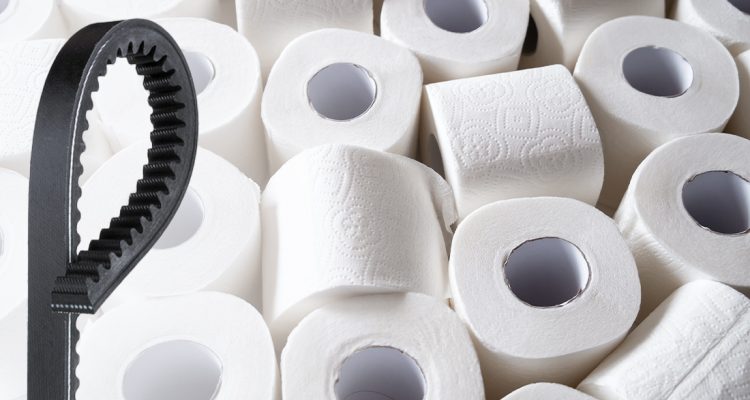There was once a Japanese novelist who printed an entire novel on a roll of toilet paper . “Drop”, set in a public restroom, takes up about 90cm of a roll and can be read in just a few minutes1. Toilet paper serves as an essential resource, that many of us can’t live without. For the author of “Drop”, it could be said that Koji Suzuki’s literary hopes and dreams depended on it.
For a resource to be so valuable, one can only ask, how is it made? Toilet paper is produced from a combination of recycled paper, wood pulp, and water. This mixture is cleaned and bleached and may include additional ingredients such as fragrances or lotion. The resulting mixture is formed into a thin layer on a screen or cylinder, pressed to remove excess water, and then dried. The dried paper is then wound onto rolls, which are cut into smaller rolls or sheets and packaged for sale.
The paper and board industry relies on a range of applications to keep equipment running smoothly – minimising the risk of downtime and preventing costly maintenance and repairs. In the case of an Australian toilet paper manufacturer, the company’s relationship with CBC as part of Motion, has enabled them to gain access to a range of Gates® belts for 20 years.
“Motion’s CBC supply this company with Gates® belts, and have been servicing them since I started at Motion 16 years ago,” says Aaron Moss, Branch Manager for Motion Bayswater.
Gates® Corporation is a leading manufacturer of application-specific fluid power and power transmission solutions. In paper and board sectors, Gates® belts are commonly used in conveyor systems, rollers, and pulleys – used to transfer raw materials like paper pulp as part of the toilet paper production process.
“Gates® belts are high quality and last a long time compared to cheaper alternatives on the market – with paper and pulp, where conditions are usually quite rough, Gates® belts take a lot of pressure off the applications they are used in, providing users with belts that aren’t needing regular maintenance or replacement,” says Aaron.
With a wide range of belt products available, Motion’s CBC can offer clients like the toilet paper company, belts tailored to their individual wants and needs.
“Taking this particular customer as an example, they process paper and pulp, through large and small machines to make toilet paper as well as other products like serviettes, all of which need different sized belts,” says Aaron. “For compact machines they have smaller timing belts and on bigger manufacturing machines, there are heavy duty timing belts – regardless of the size of the machine, Gates® belts has you covered.”
As the largest distributor of Gates® products, Motion provides technical support to customers who need help with their drive systems – no matter where they are based.
“Machines in this industry are constantly running under tough conditions, so it’s important that our customers have access to not only the equipment, but the expertise and knowledge needed to get the most out of their products in the long run,” says Aaron.
The team at Motion possess industry-specific expertise and are readily available to address any enquiries or concerns raised by customers. With Motion and Gates®, paper and board companies can take advantage of innovative solutions that can optimise their operations and decrease costs.
For more information, visit your local Motion branch today.
Benefits of Gates® belts:
- Durability: Made from high-quality materials that are designed to withstand extreme temperatures, chemicals, and abrasive materials. Ensures that the belts have a long service life, reducing the need for frequent replacements.
- Efficiency: Gates® belts are engineered for high performance, offering excellent power transmission and reduced slippage. They are efficient in transferring power from the source to the load, resulting in improved productivity and reduced energy consumption.
- Versatility: They are suitable for a wide range of applications, including automotive, agriculture, mining, construction, and manufacturing. Available in different sizes and types, such as V-belts, synchronous belts, and timing belts, to suit specific needs.
- Reduced maintenance: Belts require minimal maintenance, as they are designed to operate under various conditions without frequent adjustments. This reduces downtime and maintenance costs, resulting in increased profitability.
- Safety: Designed with safety in mind, featuring non-slip designs and reduced vibration. This ensures that they operate smoothly and safely, reducing the risk of accidents and injuries.
References:
- The Japan Times (2009) Writer rolls out horror story on toilet paper, The Japan Times. https://www.japantimes.co.jp/news/2009/05/26/national/writer-rolls-out-horror-story-on-toilet-paper/

